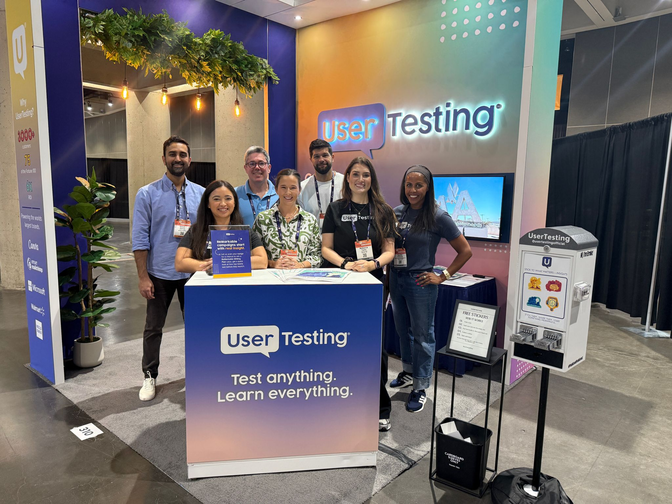
Customer journey optimization: 5 KPIs to reduce bounce and convert

Marketing does not end with a click. It begins there. Digital marketing teams spend heavily on paid media, organic search, email, and social to bring in traffic to your website.
Too often, it’s like inviting guests into a store only to have them turn right back out the door. Bounce rates remain high, channel-specific conversion rates underperform, and expensive traffic fails to generate the expected return.
The problem is that traditional analytics only show activity, not experience. Vanity metrics like click-through rate (CTR), bounce rate, or cost per click (CPC) provide numbers that look neat on a dashboard but fail to explain what customers really went through. To reduce bounce and unlock growth, marketing teams need a different lens.
“If you're responsible for website performance, you know how challenging it is to keep visitors engaged and drive conversions,” said Diane Harding, Principal Product Marketer at UserTesting. “High bounce rates, cart abandonment, and confusing navigation can all stand in the way, but traditional analytics only tell you part of the story. They show what's happening, but not why the users are actually struggling.”
This is where journey continuity metrics come in. These KPIs move beyond isolated clicks and page views. They measure whether customers feel aligned, confident, and supported throughout the journey.
Why traditional KPIs fall short
The metrics most teams track today give a partial picture. Bounce rate tells you who left, but offers little detail on their engagement experience. CTR highlights how many people clicked an ad, not whether the landing page matched their expectations. Time on page suggests attention, but it cannot reveal if users were engaged or simply stuck.
These numbers lead teams to optimize single screens in isolation. A landing page may be tweaked for better readability. A CTA may be made bolder. However, the real customer experience is fluid. People arrive, drop off, return through a different channel, and continue evaluating. Analytics capture the sequence, not the story. It’s like having a list of AI-generated chapter titles without ever reading the plot.
On-Demand Webinar
Fix the gaps: how to optimize the customer journey for better ROAS and higher ROI
The rise of journey continuity metrics
Journey continuity metrics are designed to measure whether customers move forward smoothly across pages, sessions, and channels. They reveal if expectations are being met, if confidence is being built, and if engagement flows naturally.
This shift is critical because users behave fluidly. A visitor might click through from a paid ad on mobile, leave, and return days later from an email on desktop. To them, it is one journey. Without continuity, each session feels disconnected, which impacts your thought leadership and wastes acquisition spend.
Expectation alignment
This metric asks whether the site delivers on the promise made in the campaign. If an ad promises urgency but the landing page buries the offer, users feel misled. It’s the difference between a restaurant menu promising a steak and then serving a salad, customers notice the gap. Aligning expectations prevents the trust gaps that drive bounce.
Task completion confidence
Traditional success metrics stop at whether a task was completed when users who finish a checkout or form while feeling uncertain are unlikely to return. Measuring task completion confidence reveals hidden friction and helps build assurance that drives loyalty.
Continuity across sessions and channels
Returning visitors should feel like they are picking up where they left off, not starting over. When a cart empties or a product search resets, it signals a break in continuity. Measuring this KPI shows whether re-engagement flows are truly seamless.
5 KPIs to replace vanity metrics
To optimize the customer journey, teams should track these continuity-focused KPIs:
- Expectation alignment rate: Does the page deliver what the campaign promised?
- Task completion confidence score: Do users feel secure and successful when completing key tasks?
- Journey continuity score: Do re-engaged users continue smoothly or restart from zero?
- Friction identification rate: Where do users hesitate, repeat actions, or abandon tasks?
- Cross-channel consistency score: Is the experience coherent across paid, organic, email, and social?
The transition starts by auditing existing analytics. Ask where surface-level KPIs miss the bigger picture. Then, layer in qualitative data such as recorded sessions, surveys, or feedback forms to capture the why behind the what.
Next, test experiences across full journeys instead of individual pages. For example, observe how a user navigates from a paid ad to checkout, leaves, and then re-enters from an email. This exposes continuity gaps that bounce rate or CTR cannot.
Finally, pilot these metrics in high-cost channels such as paid search, where small improvements in bounce or conversion deliver outsized ROI. Once validated, roll them out across other acquisition channels.
The business case for continuity metrics
Shifting to journey continuity metrics reduces bounce rates, strengthens conversions, and maximizes return on advertising spend. By ensuring that expectations are aligned, tasks feel achievable, and experiences are consistent across channels, teams build seamless systems and momentum.
The payoff is not just in numbers but in customer perception. Experiences that feel connected and intuitive make people more willing to return, convert, and advocate for your brand. In short, marketing that converts is marketing that listens.
Rethinking KPIs for growth
Vanity metrics mislead. Journey continuity metrics reveal reality. By focusing on expectation alignment, task completion confidence, and continuity across touchpoints, teams can transform how they optimize customer journeys.
Success is not about isolated clicks. It is about connected experiences that reduce bounce, strengthen engagement, and encourage brand loyalty.
Key takeaways
- Vanity metrics mask friction because they measure activity, not experience.
- Journey continuity metrics uncover where expectations break, where confidence lags, and where continuity fails.
- The five KPIs to track are expectation alignment rate, task completion confidence score, journey continuity score, friction identification rate, and cross-channel consistency score.
- Shifting to these metrics reduces wasted spend, improves ROI, and strengthens brand messaging across all acquisition channels.
- The future of optimization lies in connected journeys, not isolated clicks.
FAQs
Q: How can journey continuity metrics improve overall user experience?
A: They provide an end-to-end view of the journey rather than focusing on isolated interactions. By identifying friction, aligning expectations, and measuring confidence, these metrics help teams create seamless, trustworthy, and consistent experiences across channels and devices.
Q: How do I identify and resolve interruptions in user journeys?
A: Map the entire journey and analyze data for drop-offs, delays, or repeated visits. Use heatmaps, recordings, and surveys to capture where users feel stuck. Then refine flows, simplify navigation, and add real-time support. Prioritize fixes that have the biggest impact on satisfaction and business goals.
Q: How do I prioritize fixes for identified user pain points?
A: Start with data to measure severity and frequency. Look for patterns in recurring issues. Assess impact on conversion and satisfaction. Align stakeholders around user needs, focus on root causes, and set success metrics to measure improvement over time.
GUIDE





